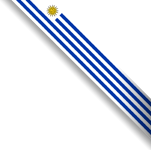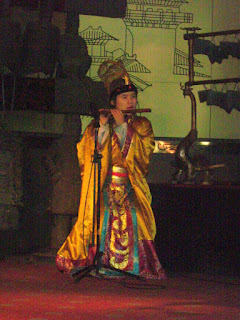Este sari lo compré en una pequeña tienda de Aurangabad, en el estado de Maharashtra, India.
I bought this saree in a small shop in Aurangabad, in the state of Maharashtra, in India.
Es un sari barato que las mujeres usan para ir al mercado y otras actividades cotidianas. Me costó 500 rupias, unos 9 dolares. No es de los más baratos que se puede comprar pero es un sari bonito para salir de casa.
It's a cheap sari that Indian women wear for going to market and other daily activities. It cost me 500 rupees, about 9 American Dollars. It is not the cheapest you can buy but it's a nice sari for going out.
Cuando compramos un sari debemos preguntar por la blusa (saree blouse). Por lo general el sari trae una pieza de tela destinada a confeccionar la blusa. Pero los saris más baratos no traen nada y debemos comprar la blusa aparte. Estas blusas son muy baratas, de un sólo color y se venden en los bazares.
Pero este sari no es de los más económicos así que traía su correspondiente tela para la blusa.
When we purchase a saree we must ask about the blouse (saree blouse). Usually the saree brings a piece of cloth intended to make the blouse. But cheaper saris bring nothing and we buy the blouse apart. These blouses are very cheap, in single colour. They are sold in the bazaars.
But this sari is not the cheapest so it brought a corresponding blouse fabric.
El diseño de la espalda se puede elejir de un catálogo.
The back design can be chosen from a catalog..
El sari debe usarse con varias pulsera para que el atuendo quede completo pero en este caso lo usé para ir a una fiesta en mi país y no quería llamar tanto la atención :) Pero si lo usamos en India entonces es imprescindible completarlo con varias pulseras en las dos muñecas. Nuestra costumbre de usar una pulsera de un sólo lado o más de un lado que del otro no se ve bien en la India. Ellas usan cantidades iguales en ambas muñecas haciendo juego con el color del sari.
We should wear some bangles with the saree because they are very important for completing the outfit. But in this case I wore it for going to a party in my country and I didn´t want to become very much "highlight" so I put only a single bangle. :) But if we wear it in India then we must complete it with several bracelets on both wrists. Our custom of wearing a bracelet from one side or more on one side than the other does not look good in India. They use equal amounts in both wrists and matching the colour of the sari.
Usar sari en mi país es una audacia porque aquí nadie lo conoce. Pero yo lo considero un vestido muy elegante, aunque en realidad sólo es una pieza de tela de 7 metros :)
To wear saree in my country is a boldness because here nobody knows it. But I consider it a dress very elegant, even it is only just a 7 meters piece of fabric around me :)
En la fiesta:
Me at the party:
¿Ustedes lo usarían para una fiesta en su país?
Would you wear it for a party in your country?
I bought this saree in a small shop in Aurangabad, in the state of Maharashtra, in India.
It's a cheap sari that Indian women wear for going to market and other daily activities. It cost me 500 rupees, about 9 American Dollars. It is not the cheapest you can buy but it's a nice sari for going out.
Cuando compramos un sari debemos preguntar por la blusa (saree blouse). Por lo general el sari trae una pieza de tela destinada a confeccionar la blusa. Pero los saris más baratos no traen nada y debemos comprar la blusa aparte. Estas blusas son muy baratas, de un sólo color y se venden en los bazares.
Pero este sari no es de los más económicos así que traía su correspondiente tela para la blusa.
When we purchase a saree we must ask about the blouse (saree blouse). Usually the saree brings a piece of cloth intended to make the blouse. But cheaper saris bring nothing and we buy the blouse apart. These blouses are very cheap, in single colour. They are sold in the bazaars.
But this sari is not the cheapest so it brought a corresponding blouse fabric.
El diseño de la espalda se puede elejir de un catálogo.
The back design can be chosen from a catalog..
El sari debe usarse con varias pulsera para que el atuendo quede completo pero en este caso lo usé para ir a una fiesta en mi país y no quería llamar tanto la atención :) Pero si lo usamos en India entonces es imprescindible completarlo con varias pulseras en las dos muñecas. Nuestra costumbre de usar una pulsera de un sólo lado o más de un lado que del otro no se ve bien en la India. Ellas usan cantidades iguales en ambas muñecas haciendo juego con el color del sari.
We should wear some bangles with the saree because they are very important for completing the outfit. But in this case I wore it for going to a party in my country and I didn´t want to become very much "highlight" so I put only a single bangle. :) But if we wear it in India then we must complete it with several bracelets on both wrists. Our custom of wearing a bracelet from one side or more on one side than the other does not look good in India. They use equal amounts in both wrists and matching the colour of the sari.
Usar sari en mi país es una audacia porque aquí nadie lo conoce. Pero yo lo considero un vestido muy elegante, aunque en realidad sólo es una pieza de tela de 7 metros :)
To wear saree in my country is a boldness because here nobody knows it. But I consider it a dress very elegant, even it is only just a 7 meters piece of fabric around me :)
En la fiesta:
Me at the party:
¿Ustedes lo usarían para una fiesta en su país?
Would you wear it for a party in your country?

































































